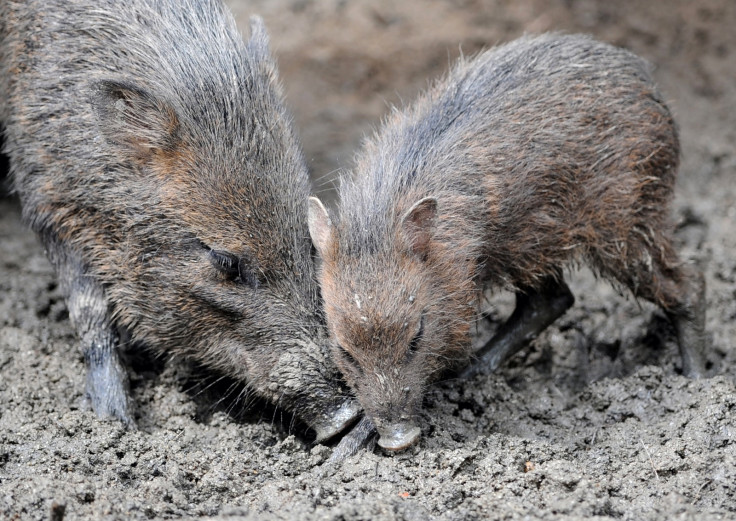Watch: Skunk pigs in mourning hold wake for dead friend
The video of the animals reacting to their herd member's death was captured by an 8-year-old boy for his school science project.
What happens when a peccary dies? According to a recent video, its friends hold a wake to mourn the loss and express their grief.
On finding the dead body of the pig-like animal back in January, Dante de Kort, an eight-year-old boy from Arizona decided to use his motion-activated camera to film what would happen to the corpse. He planned to use the footage for his school science fair project.
Little did he know that his camera would reveal how animals mourn their dead.
Peccaries are hoofed mammals native to the Americas. Also known as javelinas or skunk pigs, these animals look a lot like pigs and wild boar. They are typically social beings who live in tight-knit groups and rely on their social structure to defend territory, protect against predators, regulate temperature, and interact socially.
In the video, the collared peccaries visit the carcass of their deceased female herd member repeatedly and even attempt to lift it up with their snouts. Some choose to spend the night next to the body and protect it from predators. The group finally left after coyotes started feasting on the dead animal.
"It really surprised me that they would stand up to the coyotes," de Kort said according to The National Geographic, noting that the peccaries were outnumbered. "Most people think they're just animals, but they actually are pretty smart, and they have some human instincts too."
Prescott College biologist Mariana Altrichter came across the video while visiting a regional science fair and was surprised to notice this particular behaviour. "It was pretty amazing because it wasn't just an immediate reaction and then they moved on—it went on for 10 days," Prescott College chair of the International Union for Conservation of Nature's Peccary Specialist Group said.
Along with de Kort, she wrote a paper on the particular behaviour which was published in the 5 December edition of the journal Ethology.

"These levels of behavioural complexity for peccaries are beyond those known so far," the paper states. "The behaviours of this herd of peccaries resemble those of humans, cetaceans, chimpanzees, and elephants and show that these groups are not the only ones that react to death."
In the case of elephants, they spend days standing around their fallen member, rocking back and forth and pulling on the body. Chimpanzees are known to clean a corpse and avoid the area in which it died. Mothers will even go to the extent of carrying around their dead chimp babies for days before letting go.
A number of marine mammals show similar emotions. "When one died the others would stop when passing by, as if to acknowledge or confirm that it was dead," Ingrid Visser of the Orca Research Trust in Tutukaka, New Zealand, said of her study of pilot whales. She observed similar reactions from bottlenose dolphins and orca whales.
"If we tried to get them to move past without stopping, they would fight to go back to the dead animal. I do not know if they understand death but they do certainly appear to grieve — based on their behaviours."






